Darrell Brooks trial: Defendant's 50-minute rant, calls for dismissal
Darrell Brooks: Victims' final moments detailed in court
They stepped off to make memories on Main Street, but on Thursday, prosecutors detailed the final moments of all six people killed in the Waukesha Christmas Parade. Also, the day in court was delayed again -- this time because of a nearly hour-long rant from Darrell Brooks.
WAUKESHA, Wis. - Prosecutors in the Darrell Brooks trial on Thursday, Oct. 13 picked up where they left off when severe weather interrupted witness testimony tied to the Waukesha Christmas Parade tragedy in November 2021. Brooks went on a 50-minute rant late Thursday morning, calling for the dismissal of the case against him, citing a number of reasons why proceedings shouldn't continue. Judge Dorow denied the request, stating, "This trial will keep going."
State serves Brooks' subpoenas
As things got underway Thursday, the state noted all of Brooks' subpoenas had been served. Prosecutors noted Brooks' subpoenas included a report date of Oct. 14 at 8 a.m. Prosecutors, who previously said they were "behind" in presenting their case-in-chief even before Wednesday's early adjournment due to the tornado warning, said we "do not believe we will have rested by then," noting as of Wednesday morning they were "on track to rest Monday."
Brooks noted the judge helped him fill out his subpoenas with that Oct. 14 date.
Judge Jennifer Dorow made note of Brooks' repeated insistence that he does not identify by the name Darrell Brooks.
"You haven't provided me with a different name," said Dorow. "Every inmate communication form has the name Darrell Brooks, Jr."
The judge added that she likes to refer to the defendant by their name "out of respect" instead of referring to them as defendant.
"You've never given me another name for which to call you," said Dorow, noting that her calling him Darrell Brooks is "not a disrespectful thing."
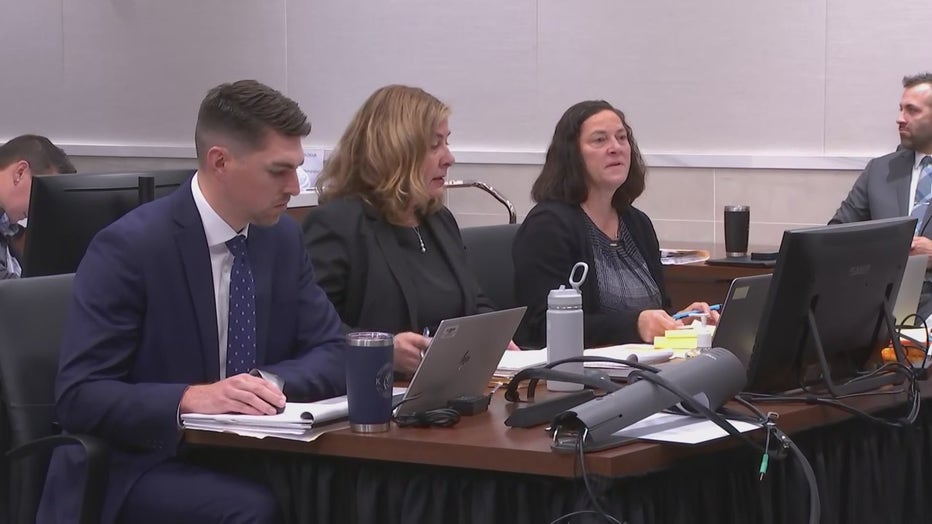
Prosecution team in the Darrell Brooks trial
"It's out of respect for these proceedings," she said.
Brooks said, "No disrespect taken whatsoever, your Honor. For the record, I still would not consent to that name or agree to that name."
Dorow said Brooks' position was noted.
Brooks trial timeline: Thursday, Oct. 13
8 a.m.: Case called for Day 9 of jury trial
State served all of Brooks' subpoenas
Brooks filed documents, including "bond" document
8:14 a.m.: Jury entered
Laura Thein, Milwaukee Dancing Grannies member, testified for the state
Deputy District Attorney Lesli Boese questioned Thein
Brooks cross-examined Thein
9:43 a.m.: Brooks repeated "grounds" objections discussed outside the presence of the jury
9:51 a.m.: Brief morning break
10:10 a.m.: As soon as the jury was being brought back in after the morning break, they were taken out
Brooks brought up subject matter jurisdiction, as he has for the entirety of the trial
Brooks went on a 50-minute rant, calling for the case to be dismissed and making multiple demands to the court
Prosecutor and Judge Dorow responded; trial would continue
11:30 a.m.: Jury re-entered
Hope Evans-Jansen, who attended the Waukesha Christmas Parade, testified for the state
District Attorney Sue Opper questioned Evans-Jansen
Brooks cross-examined Evans-Jansen
11:56 a.m.: Lunch break
1:12 p.m.: Jury re-entered
Master Trooper Michael Smith, Wisconsin State Patrol Accident Reconstructionist, testified for the state
Assistant District Attorney Zachary Wittchow questioned Smith
Brooks cross-examined Smith
Dr. Amy Sheil, Waukesha County associate medical examiner, testified for the state
Boese questioned Sheil
Brooks cross-examined Sheil
2:13 p.m.: Short afternoon break
2:29 p.m.: Jury re-entered
Dr. Lynda Biedrzycki testified for the state
Boese questioned Biedrzycki
Brooks cross-examined Biedrzycki
Boese re-directed Biedrzycki
Matthew Widder, Catholic Community of Waukesha priest, testified for the state
Boese questioned Widder
Brooks cross-examined Widder
Boese re-directed Widder
4:35 p.m.: Brief recess
4:49 p.m.: Jury re-entered
Lukas Hallmark, Waukesha police detective at the parade as a citizen, testified for the state
Boese questioned Hallmark
Brooks cross-examined Hallmark
Boese re-directed Hallmark
6:28 p.m.: Jury excused
Housekeeping issues addressed
Brooks received certified documents (complaints) requested from clerk's office and an incident report
6:33 p.m.: Recess for the night
Brooks' files 'bond' document, requests complaints
There was then a discussion about a document filed by Brooks with a heading that said something about "bond," filed by Darrell Brooks, Jr. as the authorized representative of Darrell Brooks. The judge said this would be made part of the court file, but she would not be referencing any law related to this request.
"I'm not sure what you're asking me to do with it, as well," said Dorow. "I don't see a clear request for relief, as well."
Dorow said it would be filed and added, "I'm not going to address it any further."
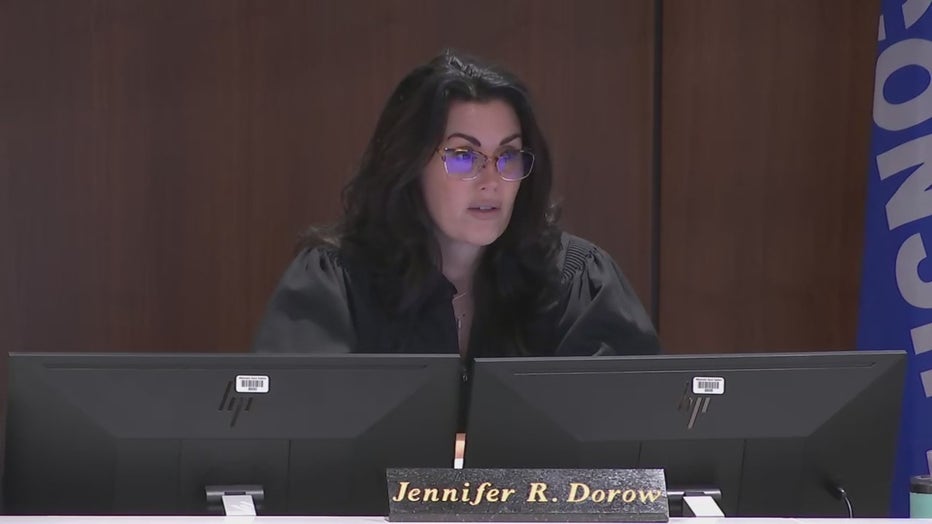
Judge Jennifer Dorow
Brooks requested a "time-stamped original copy" and that Dorow provide "verified law of your own that it's not a clear document."
"It's a very, very clear document in its entirety," said Brooks.
Dorow pointed Brooks to Statute 802.01, governing motions. She said his document did not comply with statute. She added that the court had a date stamp but not a time stamp, and the document would be scanned and uploaded into the file.
Brooks argued that this document "was presented in the same format all my other motions were presented in," adding that the judge's ruling "leads me to believe it's just a document that's not being accepted."
"You were notified that future requests needed to comply with Section 802.01," said Dorow. "Even with a liberal reading of that document, I'm not sure what it is you're asking me."
Brooks said the document referred to why there was no bond mentioned or stated in the docket sheet.
"This docket is not a certified copy, which is what I requested," said Brooks.
The judge informed Brooks multiple times that she is not the custodian of the record, and he would need to take up issues with his motion and/or inmate communication forms with the clerk of courts. Brooks said he had done that, noting that "The ICF should be on record that I specifically requested a certified copy."
The defendant added that he requested three different complaints in the docket sheet, dated 11/23/21, 11/29/21 and 1/12/22. He said these "were not in any discovery" materials in his boxes on the defendant's table.
The judge told Brooks to communicate directly with the clerk.
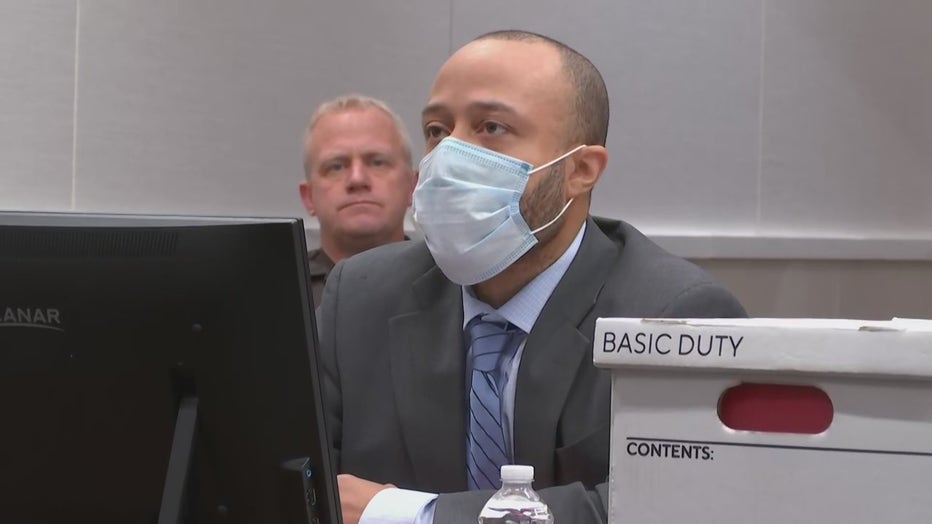
Darrell Brooks
Brooks then brought up subject matter jurisdiction again and asked if that could be discussed.
"We've already done that," said Dorow.
As the jury entered, Brooks asked, "Is that a judicial determination?"
"Mr. Brooks, please, the jury is coming out," said Dorow. "I know what you're doing, but I've already addressed that."
"I would like the record to reflect that you have not shown proof of subject matter jurisdiction whatsoever," said Brooks.
The jury entered around 8:15 a.m.
Laura Thein, Milwaukee Dancing Grannies member, testifies
Darrell Brooks trial; one of the Dancing Grannies takes the stand
Thursday, Oct. 13 proved to be an especially powerful day in the Darrell Brooks trial. Among those who took the witness stand for the state, one of the Dancing Grannies.
First to take the stand on Thursday was Laura Thein, one of the Milwaukee Dancing Grannies. Four members of the Dancing Grannies were killed during the Waukesha Christmas Parade tragedy. During the parade, the group was performing a routine set to "Winter Wonderland" when they were struck.
Thein spoke glowingly of Virginia Sorenson, one of the Dancing Grannies who died.
"Ginny was our glue," said Thien. "She held the group together. She was with us the longest. She was close to everyone. We were like sisters."
Thein then proceeded to talk in detail about the other members of the Dancing Grannies who were with her on Nov. 21, 2021.
"All of us are very friendly," Thein said.
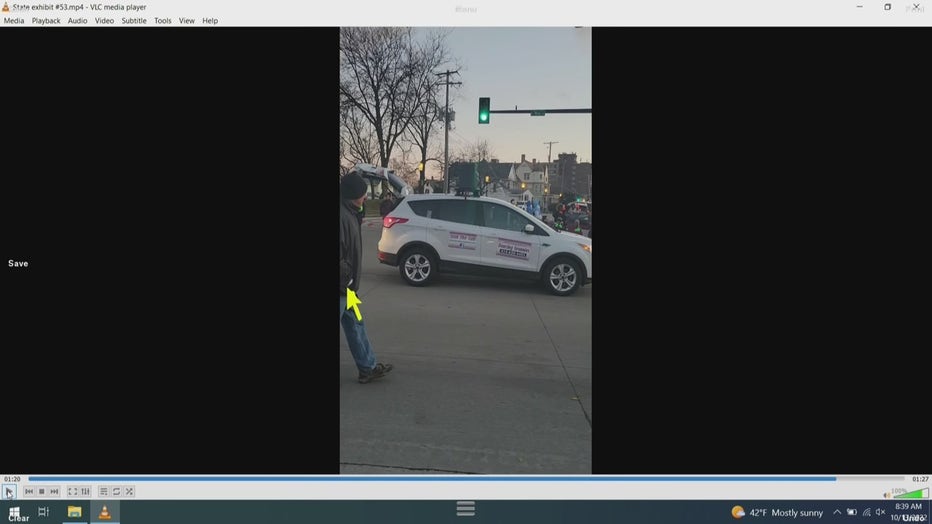
Bill Hospel
She talked about Bill Hospel, who died in surgery after the attack. His wife, Lola, is a Dancing Grannies member. Thein said Ginny carried the banner and Bill carried ice chips for them.
"Lola was the mother figure, the oldest -- just friendly with everyone," said Thein.
She talked about Lee Owen, who she said was "killed instantly," along with Ginny.
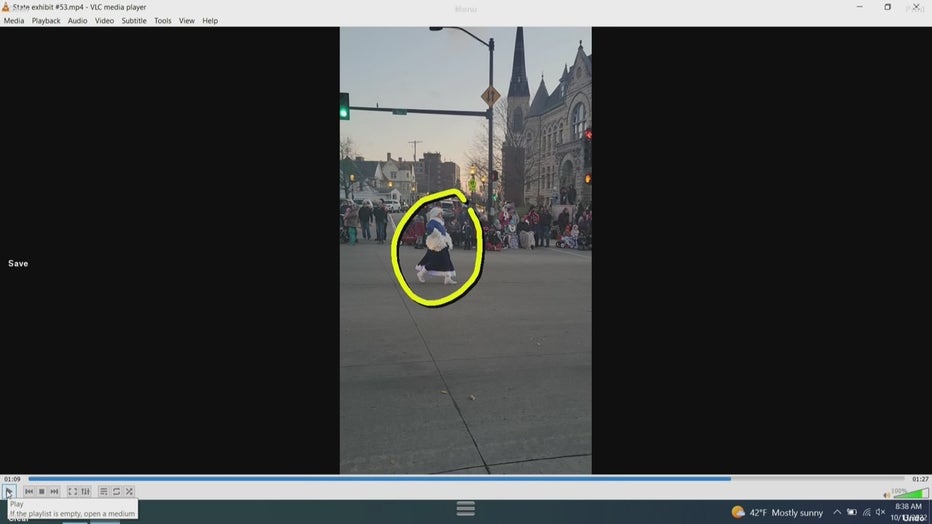
Laura Thein
"Lee was very close to Ginny," said Thein. "She talked a lot to the new people coming in. She taught them the routines."
Thein said it was Tamara Durand's first parade. She was also killed.
"She was so excited about being a granny," said Thein. "She worked for months and months to learn all the routines. That was the first and last parade she ever did."
Thein said her own husband was driving the "music vehicle," which she was in front of. She said the red SUV came from the side and hit Bill and Tamara.
"I saw a streak of red going past," Thein said. "It just whizzed past me."
Darrell Brooks trial: Laura Thein, one of the Dancing Grannies, testifies
Laura Thein, one of the Dancing Grannies, testified in the Darrell Brooks trial.
Thein said the vehicle struck multiple people.
"I didn’t see them get hit. It happened so quick," said Thein. "I screamed in my head or out loud. I said, ‘What is he doing? Where is he going?’ It was so unusual. If he was going down the parade route, he was going to hurt a lot of people."
She said she never saw the SUV slow down.
"It came from the right, hit two people and came in the middle, hit two more people and hit two more," said Thein.
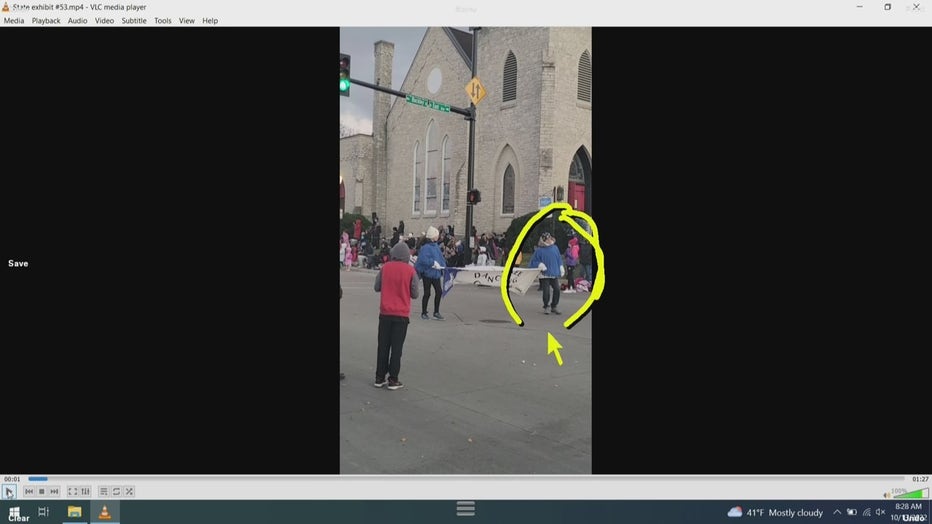
Virginia Sorenson
"After it struck Ginny, it was on the left side of the street, and it just kept barreling through," said Thein. "I looked around, and there were so many bodies on the ground. I thought I was in a war."
She said police asked her to identify Lee Owen via a photograph.
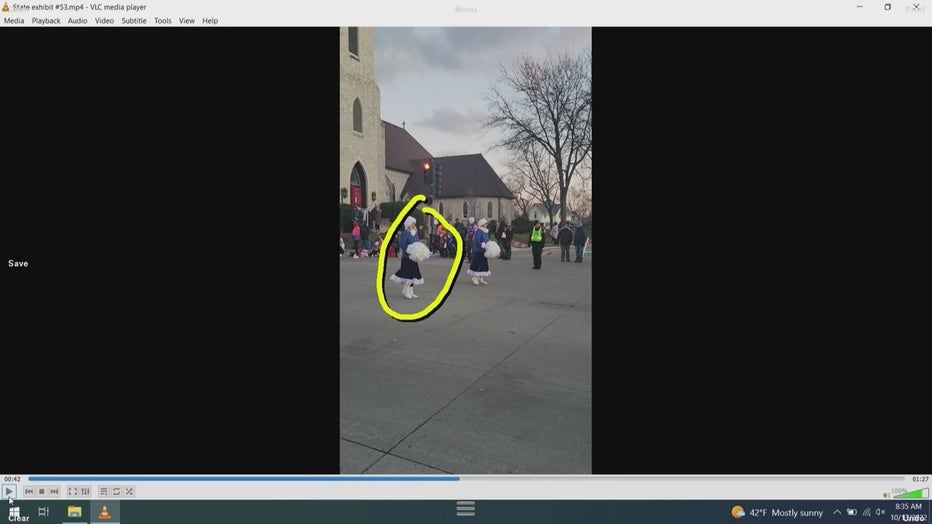
Tamara Durand
"I couldn’t even find Tamara (Durand) and Lee (Owen)," said Thein. "When they were hit, they went flying onto the sidewalk. She was thrown on the sidewalk. That’s why I didn’t see her in the road."
On cross, Brooks asked Thein about her referencing the driver as "he."
"You kept referring to a 'he, he, he.' Who did you mean by the 'he?'" asked Brooks.
"Bill would be the ‘he,’" said Thein.
Brooks asked if she got a good look at the driver of the red SUV.
"No, I don’t have eyes in the back of my head," she said.
She said she didn't know if she heard a horn.
After questioning about what news reports Thein saw, Dorow cut off Brooks' cross-examination of Thein and sent the jury out so that a legal discussion could take place.
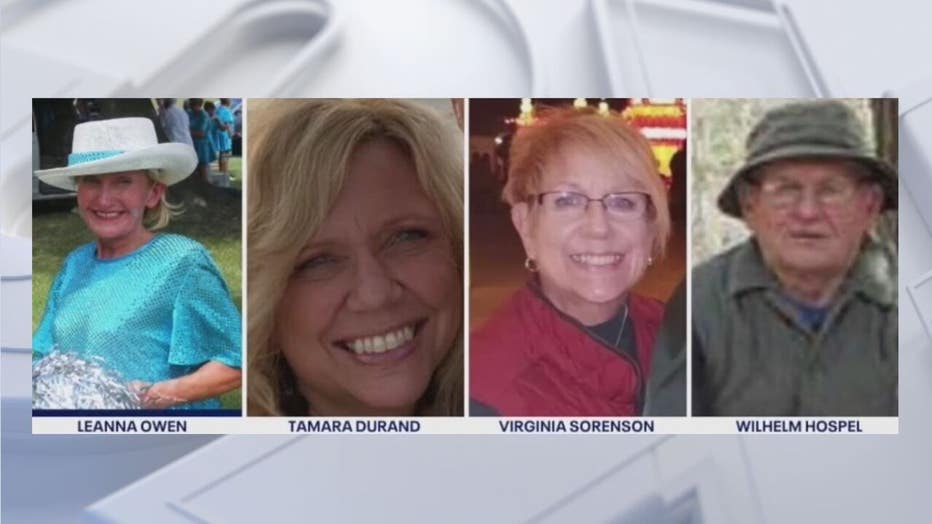
Milwaukee Dancing Grannies members killed in Waukesha Christmas parade attack
Legal discussion on Brooks' objections
Around 9:45 a.m., the jury was excused for the legal discussion.
Dorow addressed Brooks' repeated requests for the court to state the grounds in overruling his objections.
"I am not legally required to do that," said Dorow. "If you feel there is an issue later on, you can address it on appeal if convicted."
Dorow noted, "I have been answering many of them" but added that in asking for grounds, "you are asking me to provide an opinion for the court's objection on relevance. You need to be aware when you ask for the grounds, you are asking me to state a legal conclusion in front of the jury, which I don't feel is necessary. You're asking me to highlight my opinion on relevance. You need to be aware of that. The record is self-evident. Many, many times, if I feel more argument is needed, I'll excuse the jury."
Brooks said it is "judicial misconduct" for Dorow to not allow the jury to hear certain aspects of testimony.
"The plaintiff has yet to show their face," Brooks said.
"Any error you believe I've made can be raised on appeal," said Dorow.
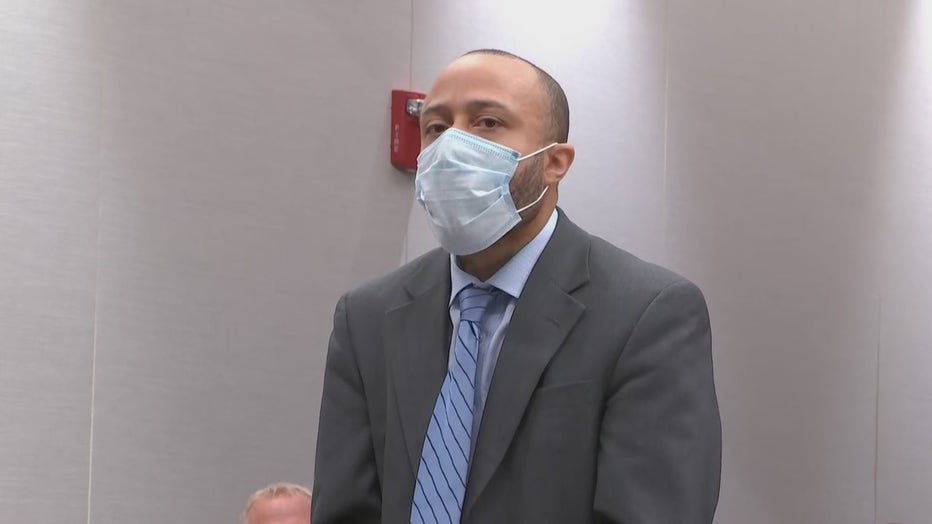
Darrell Brooks in court Thursday, Oct. 13
The court took a 15-minute "comfort break" at around 9:52 a.m. At this point, Brooks again brought up subject matter jurisdiction.
As soon as the jury was brought back in after the morning break, they were taken out.
This, after Brooks again brought up subject matter jurisdiction as the jury was brought out. He also requested an affidavit that the judge has "no bias, no conflict of interest and no interest in the outcome of the case."
Judge Dorow said she would address his legal issues outside the presence of the jury if appropriate.
As the jury was taken out, Brooks continued to make statements.
Dorow told him to "wait until the jury is out, please."
"I ask that you show that respect," the judge said.
"I will," Brooks said.
After the jury was taken out, Brooks noted the inmate communication forms he has filed.
SIGN UP TODAY: Get daily headlines, breaking news emails from FOX6 News
Brooks requests dismissal of the case in 50-minute rant
Darrell Brooks trial: Defendant challenges court proceedings
Darrell Brooks was allowed to speak at length during his trial on Thursday, Oct. 13. He took the opportunity to question the entire proceedings. The court allowed him roughly 50 minutes to speak of these challenges.
Brooks then went on a lengthy 50-minute rant, calling for the case to be dismissed.
He made multiple demands to the court, noting that he had requested certified copies of "everything." He said the docket sheet was not certified, nor was Dorow's oath of office that "you stated for the record you would not give me."
"You are required to show if I ask for it," he said.
Brooks said his Sixth Amendment constitutional right "has been pretty much discarded."
"I have the right to face my accuser, which would be the plaintiff, the state of Wisconsin in this matter," said Brooks. "A living human being can only make a claim. An entity cannot make a claim."
He again requested the three complaints in the case.
"I have yet to see those," said Brooks.
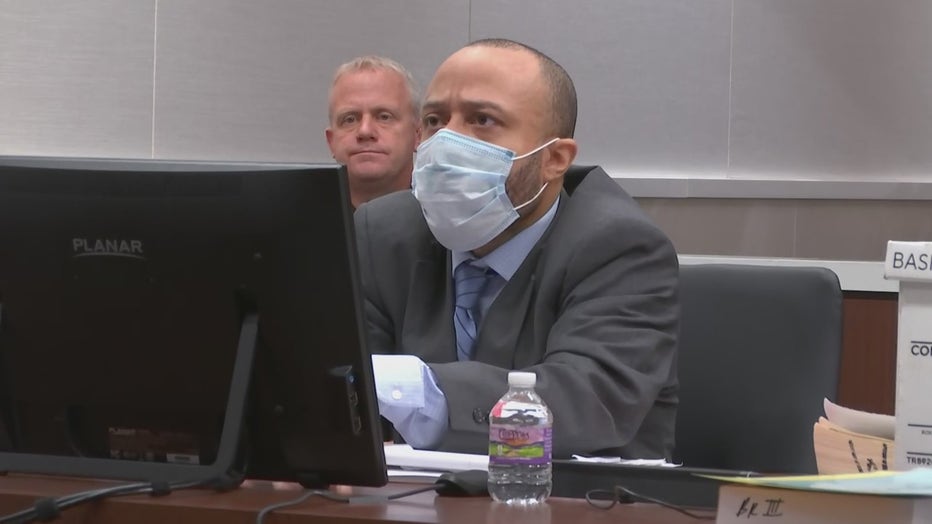
He noted "no record of a bond in my docket sheet," asking for verified proof.
"There's so many clear biases and questions that are not being asked based on judicial determinations made by your Honor," said Brooks. "At minimum, I deserve for the subject matter jurisdiction to be verified and proven. I've raised that issue many times, pretty much every day. My filings have been disregarded. I haven't gotten written copies of any of them."
He went on to say, "I'm still not even understanding the nature and cause of the charges," asking, "How can the proceedings continue when there are so many things that haven't been provided?"
"I'm without so much information, valid information to this matter, and I believe that it should be verified and it should be proven for the record, and if not, I move for this case to be dismissed," said Brooks.
He also said Dorow should "recuse yourself from the presiding at this point if you're not going to abide by the oath that you swore to protect the Constitution of the United States."
"You swore to protect we, the people," said Brooks. "That is not being done here if every valid claim that I raise is taken by the court as disrespect."
He said, "I'm merely seeking to understand why this information has yet to be provided, and we're this far into this matter."
"How is this case allowed to continue without these documents and filings being verified?" said Brooks.
He noted that he only had three days "to prepare for a trial that the prosecution has been preparing for an entire year." This, after Brooks fired his public defenders.
"How can I possibly go through all the paperwork, digital discovery and be prepared in three days?" he asked.
"That's a clear bias," said Brooks, noting that "everything that I'm doing is off the top of my head, winging it."
"There should be an adjournment at least because of that fact, at least to let me go through all the discovery," said Brooks. "That was denied. No valid reason was stated for that. There was no possible way I could be ready for a trial of this magnitude in three days."
He also brought up the plaintiff again.
"Where is the injured party?" asked Brooks. "Can anyone make a claim against me? Because of that, the motion to dismiss should be granted based on that alone. There's no injured party in this matter, so who makes the claim?"
He put the judge "on notice of my intent to appeal."
"I can raise that issue during the case, which I've attempted to do," said Brooks. "That's been shut down."
"I never intend to walk into your courtroom and be disrespectful intentionally," said Brooks. "I never come into this courtroom to disrespect anyone. Because I don't understand, I raise these issues because they have validity."
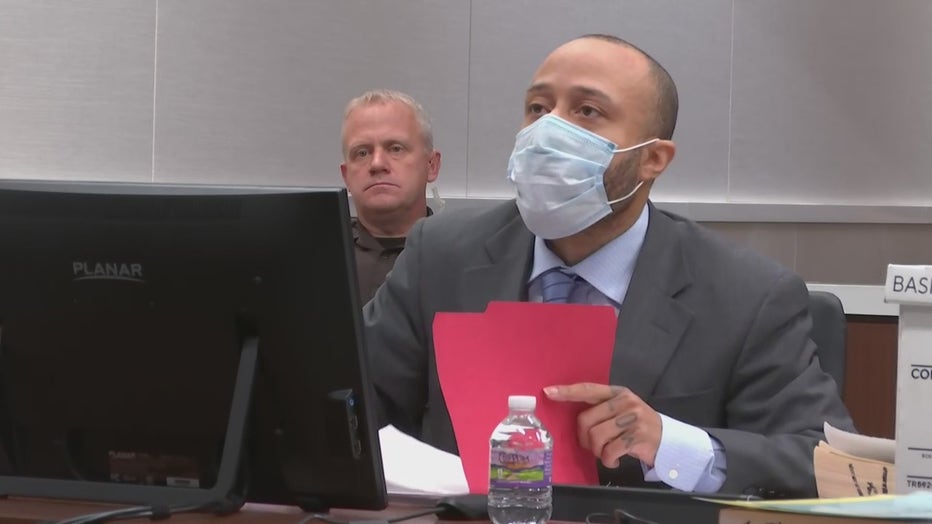
Darrell Brooks in court Thursday, Oct. 13
He brought up the change of venue motion which was denied by the court.
"There's no possible way anyone in this county would not have some type of connection...knowledge. The news reporting alone -- just that alone -- there's no way that this trial should be taking place in Waukesha County," said Brooks. "That's obvious from the way the motion was presented, the coverage alone, the political campaign ads that plastered the defendant's face all over the TV..."
Brooks said he received "hate mail" from people in Waukesha. He said "it’s impossible for an impartial jury to be found in this county."
Brooks brought up the fact that Dorow said she worked with the father of one of the people that was injured in this matter and that she called the person after hearing of the injuries. He said that person donated to some "cause" of Dorow's.
"That is a clear conflict of interest in this matter," said Brooks.
He noted that he's never had the cellphone number of anyone he's worked with. He said if he did, that would be a "personal relationship" versus a professional one.
He brought up the dismissal of his attorneys and said he should have, "at the least," been allowed to have standby counsel to assist him in representing himself.
District Attorney Sue Opper responds
Darrell Brooks trial: Prosecution response to Brooks' challenge of proceedings
Waukesha County District Attorney Sue Opper responded to Darrell Brooks' questioning of all the court proceedings surrouding his trial.
After 50 minutes, Judge Dorow stopped Brooks, noting he had "repeated yourself a number of times." She gave the state a chance to respond.
Waukesha County District Attorney Sue Opper said Brooks "knowingly and willingly insisted on representing himself at trial." Opper called back to Brooks’ "it don’t make me flinch one bit" comment about acting in his own defense.
Opper said Brooks' sovereign citizen statements "are frivolous and wholly without merit." She brought up the fact that Brooks used the word "treason" and said it was "absolutely shocking that he would throw such a word around."
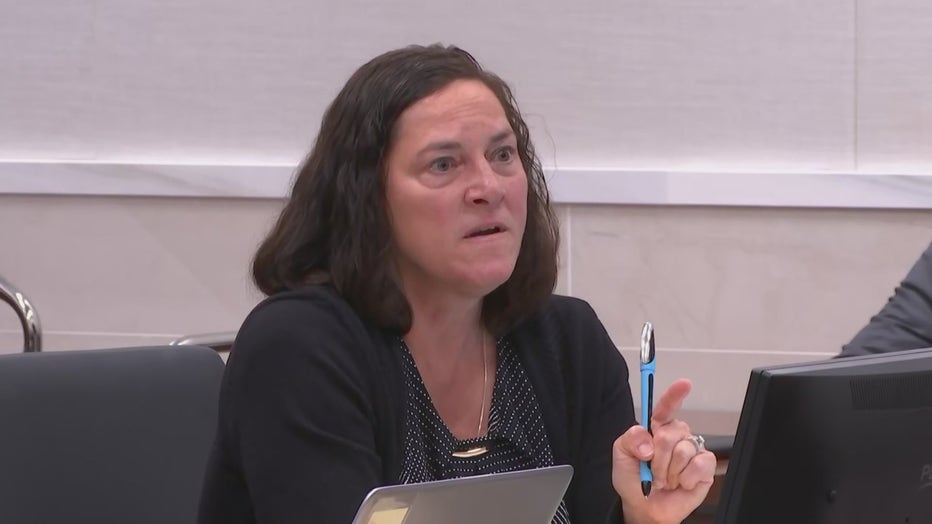
Waukesha County District Attorney Sue Opper in court Thursday, Oct. 13
She said the prosecution had been "exceedingly patient" and "exceedingly respectful" of his rights at every turn.
Opper called Brooks' statement that he only had three days to prepare for the trial a "false statement." She noted the three "organized" boxes on his defense table. She said his public defenders "did all the homework," and he was simply "reading their notes and asking questions," including "his ridiculous questions having to do with the sovereign citizen movement."
"He is not going into this blind or with one arm tied behind his back," said Opper.
She said there's "no record to reflect that he's not prepared for trial" and added that he "never made a request for a speedy trial."
She called his rant an attempt to "delay, disrupt and intimidate," and she said, "It's not going to work."
Judge Dorow says, ‘This trial will keep going’
Darrell Brooks trial: Judge Dorow's response to defendant's challenge of proceedings
After allowing Darrell Brooks roughly 50 minutes to challenge the proceedings of his trial, the judge issued this ruling.
In her response, Judge Dorow said Brooks "raised a litany of complaints and issues regarding the case," and she said, "Many, if not the vast majority or all of them, have already been addressed by this court in one way or the other."
As to his change of venue arguments, for example, Dorow said the court made a record at a hearing regarding the change of venue, and she stands by that record/decision.
She said in regard to Brooks' arguments made regarding that decision, he had yet to file an interlocutory appeal challenging that and that his arguments were "nothing more than speculative without a basis in law/fact."
"To say this jury is biased is a complete mischaracterization of justice/the process this court painstakingly took in order to obtain a fair and impartial jury," said Dorow, noting "nothing on this record before the court throughout these proceedings to suggest this is a biased jury."
The judge noted an "unusually large" panel of potential jurors called for this case and a case-specific jury questionnaire that was sent to 1,400 prospective jurors. Dorow said there was ample opportunity for the parties, leading up to the end of August, to review these materials, and there were numerous strikes for cause. She added that the parties agreed the state wouldn't challenge the vast majority of the defense's challenges regarding potential jurors.
At jury selection, Dorow noted that each side was given 10 peremptory strikes when they normally would have had six each based on the six homicide charges, plus a seventh for the alternate. Brooks refused to participate in the first eight peremptory strikes, so the clerk of court drew names by lot from a tumbler on his behalf.
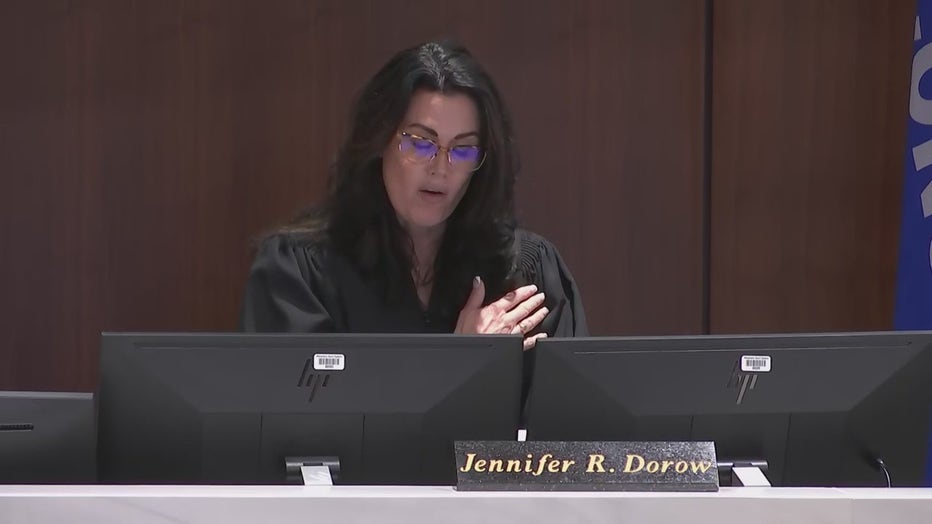
Judge Jennifer Dorow
"There is nothing on this record before the court to suggest that this jury that we have is anything but fair and impartial, and I take issue with the characterization they are anything but," said Dorow.
The judge noted that the jurors had been diligent and attentive, many taking notes.
"As I listened to the litany of issues and arguments and complaints raised by Mr. Brooks, they are all unsubstantiated, conclusory allegations and assertions without an adequate basis raised in law/fact," said Dorow.
She added there had been misstatements by Brooks, including mischaracterizations of the rights he claimed to have.
"I have stated repeatedly your constitutional rights are not absolute when in a criminal trial," said Dorow.
She noted that the First Amendment right is not "unfettered," adding that, "You cannot yell ‘fire’ in a crowded theater."
"In a criminal case, the parties have an obligation to follow not only the Constitution and the statute applicable but to follow criminal procedure…rules of evidence," said Dorow.
She called Brooks' subject matter jurisdiction arguments "baseless" and "frivolous" and "not anything the court needs to address further."
"This court has jurisdiction over criminal cases brought before it by the state of Wisconsin," said Dorow. "This court sits as an elected official in the county of Waukesha to hear these types of cases. That is clear."
Dorow said the "only argument or relief I could discern through the course of 50 minutes" is that Brooks asked that the case be dismissed for lack of subject matter jurisdiction.
"This court has jurisdiction," Dorow said, again.
She added that "the issue has not even been raised properly" because there had never been a written motion or oral motion based on statute "which requires the basis for the relief being requested with specificity based in law and fact."
She said Brooks does have the right to an interlocutory appeal, but she would not be the judge to decide any of those issues.
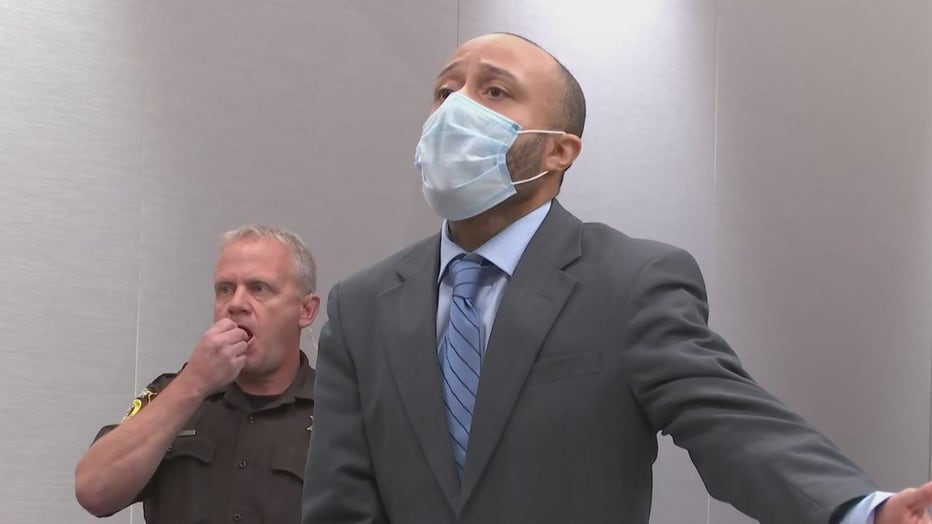
Darrell Brooks in court Thursday, Oct. 13
"The record is going to be very clear," said Dorow. "I have a court reporter who is taking down the record of everything that is said and done in this courtroom. I don't have to, all the time, say it's noted for the record. We are on the record. I sometimes do that. I don't always do that. I'm not required to do that."
As for statements from Brooks regarding "plea bargaining," Dorow said she had "never been made aware" of a change of plea in this case
"I see it as a distraction and as simply a statement made by you as part of the litany of things you are not, perhaps, pleased with," said Dorow.
As for "my conduct," regarding Brooks' statements about her contact with the father of a parade victim, Dorow said she was "not going to revisit issues." She said she did so "very early on," and she noted "a very thorough record" and that she gave the parties, at that point, an opportunity to address that after they had "ample time to digest that information."
Dorow noted that Brooks does have the right to seek a substitution of judge, and that right was exercised by his former attorneys on his behalf.
"To say you have the right at any time is a misstatement of law," said Dorow.
The judge concluded by saying, "This trial will keep going."
The jury was brought back in. With the jury present, Brooks said, "You don’t want the jury to hear the truth."
Hope Evans-Jansen, Waukesha Christmas Parade attendee, testifies
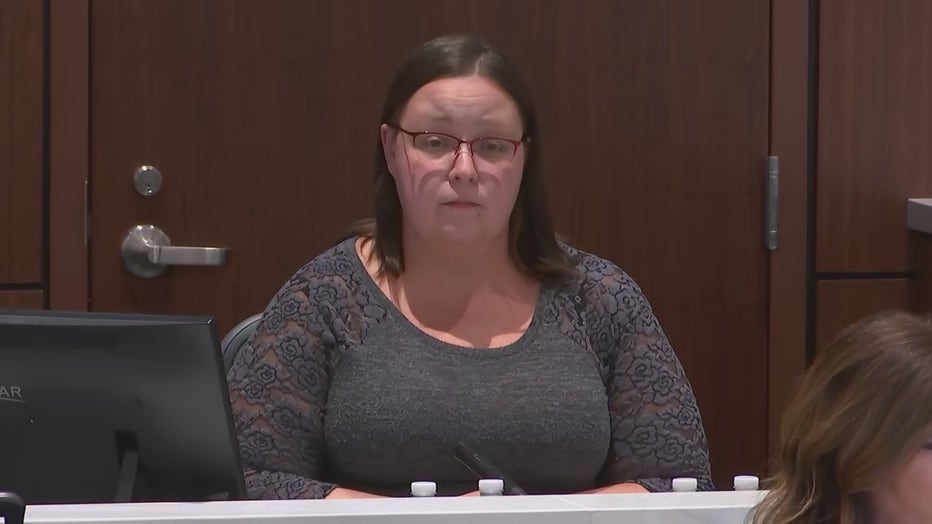
Hope Evans-Jansen
The state next called Hope Evans-Jansen, whose daughter was recording the parade on her iPhone. Evans-Jansen spoke briefly about a video associated with the Christmas parade that she shared with law enforcement. She indicated to the court that not even her family and friends had seen the video.
On cross, Brooks asked Evans-Jansen if it was loud at the parade.
"Most parades I’ve been to have been loud," she said.
She said she couldn't see the driver or if there was anyone else inside the red SUV.
After lunch, Brooks asked if the clerk received his request for copies of the complaints in the case, and Dorow said they were working on it.
Michael Smith, Wisconsin State Patrol, accident reconstructionist
After a lunch break, the state called Michael Smith to the witness stand. He is employed by the Wisconsin State Patrol as an accident reconstructionist. Smith told the court he has investigated roughly 100 accidents every year since about 2004 – and was tasked with investigating the scene at the Waukesha Christmas Parade tragedy.
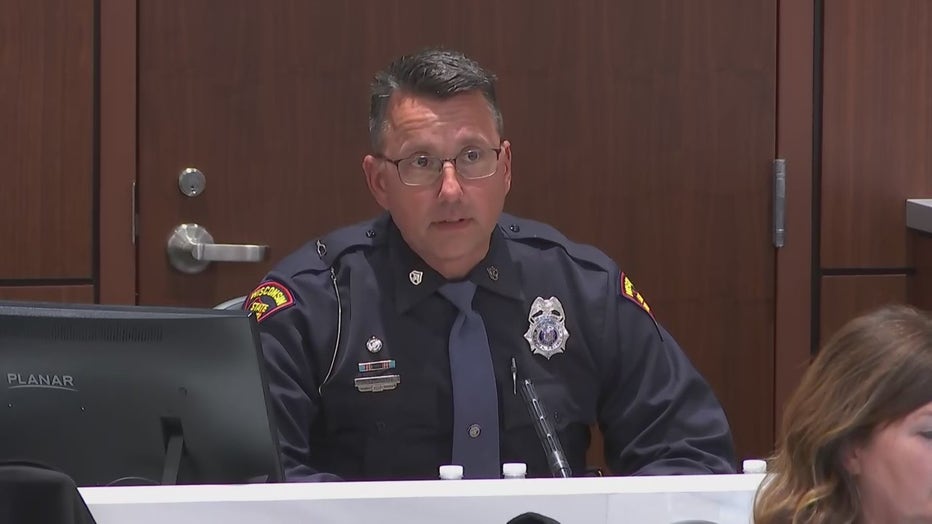
Michael Smith, Wisconsin State Patrol
He described how he was able to calculate the speed of the red SUV that went through the parade -- using two points and surveillance cameras at Couri Insurance downtown. He then produced a two-scale diagram.
He testified that he calculated the average speed from "Point A" to "Point B" to be 32 miles per hour. That was his calculation of the speed of the red SUV on Main Street past Clinton.
"It’s more plausible you have higher or lower speeds – it’s an average," he said.
He worked with Detective Casey, who previously testified, to obtain videos, noting two cameras on Couri Insurance, one to the east and one to the west. He noted 141 feet traveled.
During cross-examination, Brooks asked Smith to explain Newton's law.
"It’s something we all learned in high school," Smith said.
Dr. Amy Sheil, Waukesha County associate medical examiner, testifies
Dr. Amy Sheil, Waukesha County associate medical examiner, then took the stand to testify as to the autopsy of Lee Owen, one of the Milwaukee Dancing Grannies who was killed.
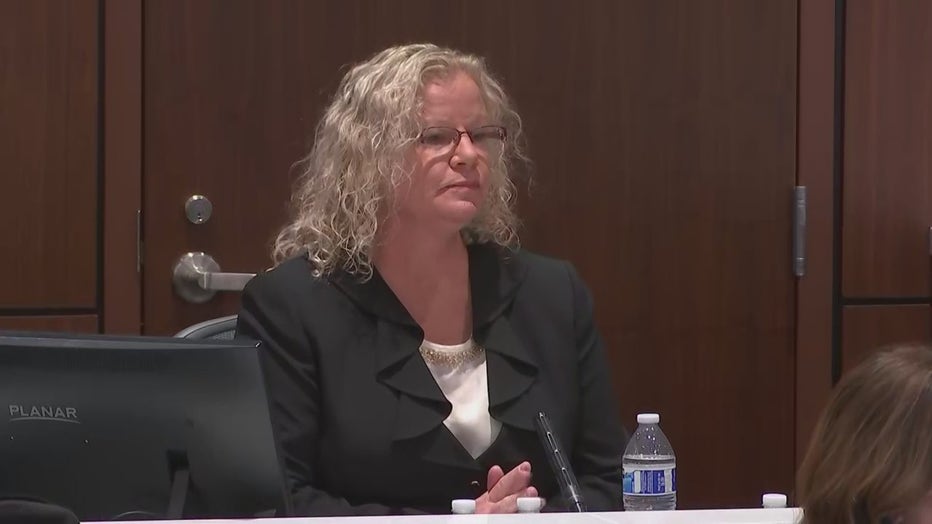
Dr. Amy Sheil, Associate Medical Examiner Waukesha County Medical Examiner’s Office
Sheil testified Owen died from multiple blunt force trauma and showed a diagram of her injuries, which included head, spine, torso and internal organ injuries. Sheil said the combination of these injuries led to her death, but the neck and spine injuries would have been fatal in a couple of seconds.
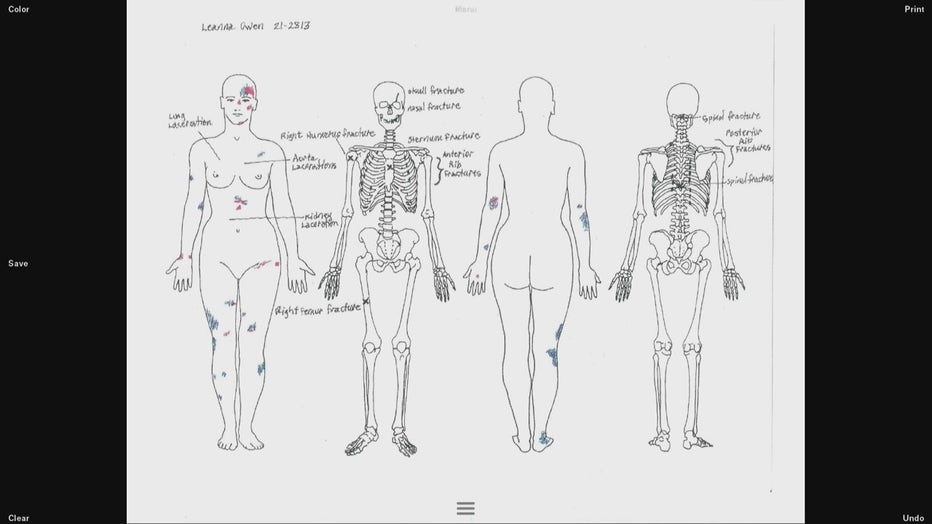
Lee Owen
Sheil then testified about the autopsy of Virginia Sorenson, another member of the Milwaukee Dancing Grannies.
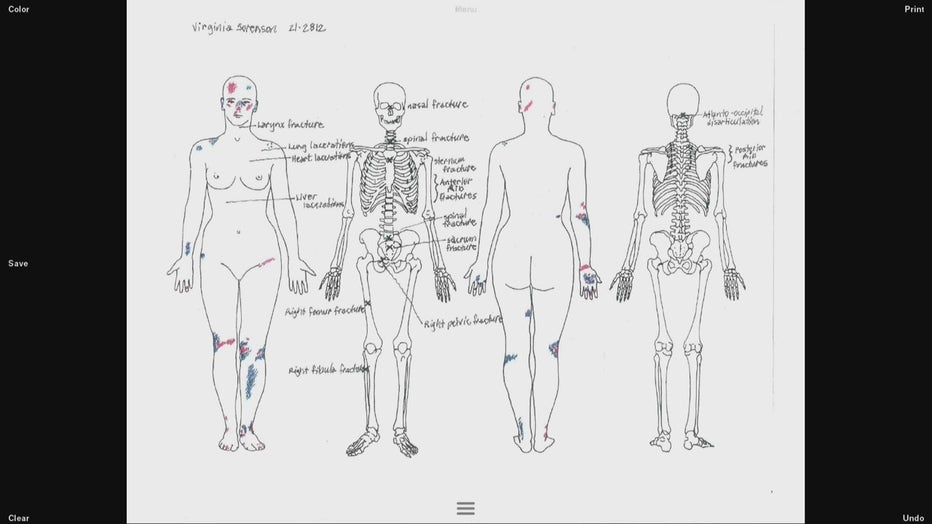
Virginia Sorenson
Sheil said Sorenson suffered blunt trauma to her head, neck, torso and right leg. The cause of death was multiple blunt-force traumatic injuries. She said Sorenson had a "high spine injury," injury to her brain stem and lacerations of her heart, which would have been fatal. She said the injuries were consistent with being struck by an SUV.
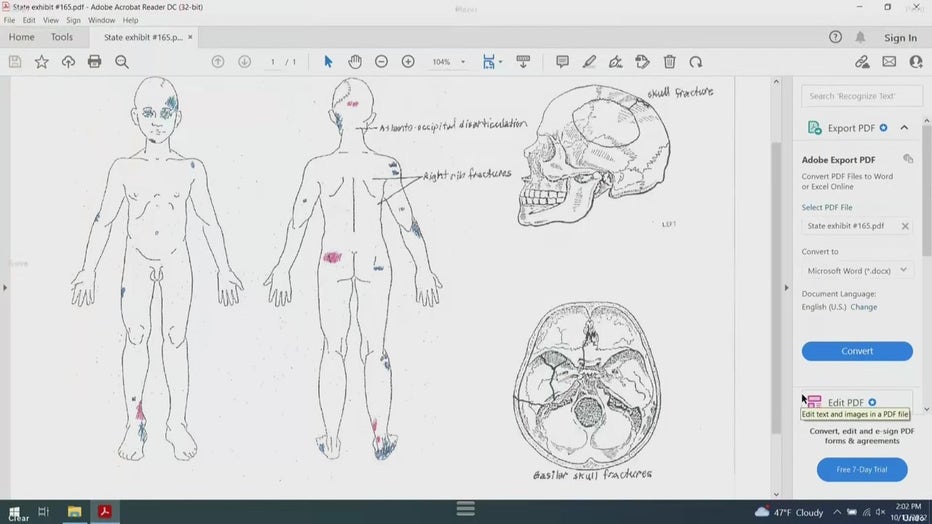
Jackson Sparks
She then testified regarding the autopsy of Jackson Sparks, 8. He died at the hospital after the parade attack. Sheil noted he became an organ donor when asked about the delay in autopsy. Sheil became choked up while testifying regarding the boy's cause of death. She said he sustained bruising around both eyes and had received a craniotomy to relieve pressure around his brain.
There was a long pause before Brooks' cross of Sheil after she held back tears while testifying about Sparks' death. He then spoke low, kept his head down and seemed to barely be able to get his questions out.
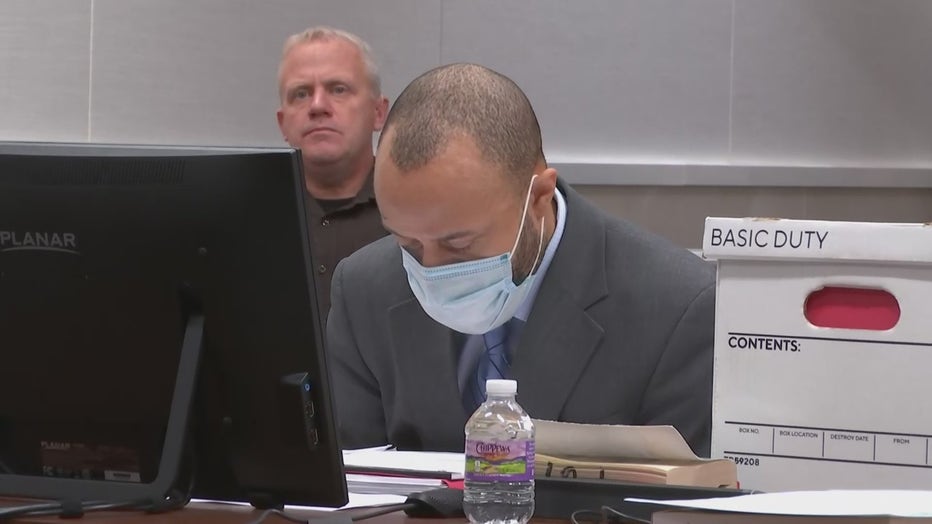
Darrell Brooks cross-examines Waukesha County associate medical examiner after emotional testimony about autopsies
His cross was short, asking about when the victims were taken to the hospital. Sheil said Sorenson and Owen were pronounced dead at the scene, and Jackson Sparks was taken to the hospital; transferred to Children's Wisconsin.
Brooks then asked for a "moment," and the court took a 10-minute break.
Dr. Lynda Biedrzycki, Waukesha County medical examiner, testifies
Next to testify for the state Wednesday afternoon was Dr. Lynda Biedrzycki, Waukesha County medical examiner.
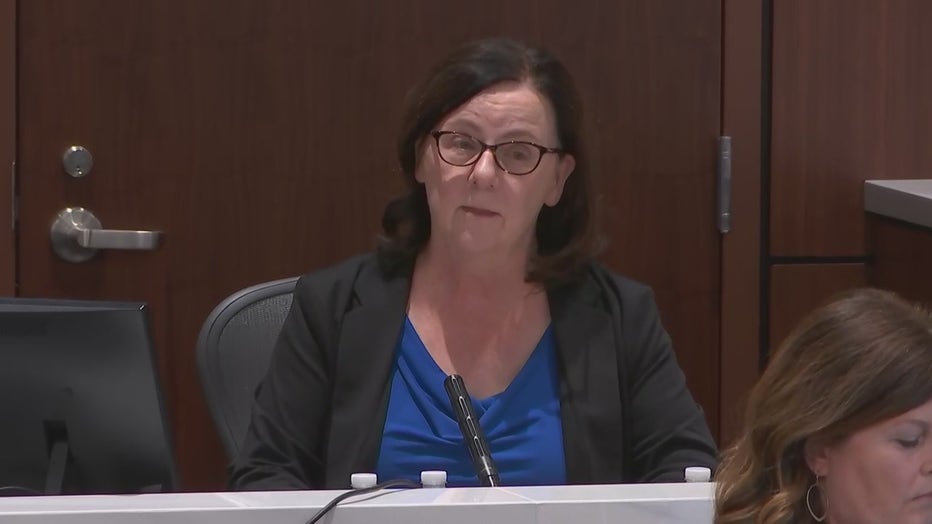
Dr. Lynda Biedrzycki, Waukesha County medical examiner
Biedrzycki began by testifying regarding the autopsy of Tamara Durand, another of the Milwaukee Dancing Grannies killed in the parade attack. Durand was brought from the scene to the medical examiner's office.
The medical examiner testified she also went to the scene of the attack downtown on Nov. 21.
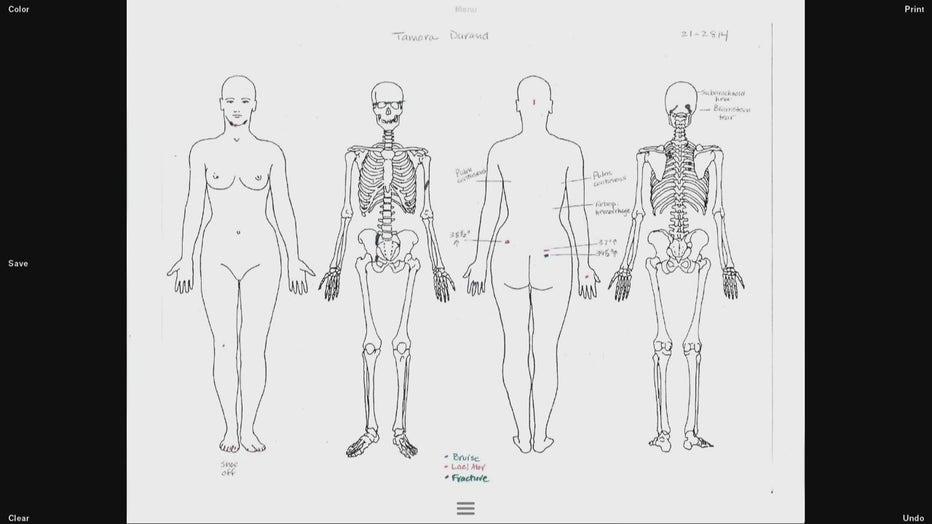
Tamara Durand
Biedrzycki said when the car struck Durand's hip, it broke her pelvis. The impact pulled her foot out of her shoe, which Biedrzycki described as "characteristic of a pedestrian injury because of the force and velocity of that impact." She said Durand had a laceration on back of her head, indicating she fell to ground after the impact. She suffered a skull fracture "from ear to ear" and other fractures in the back of the head, along with a brain hemorrhage, brain stem tear and rib fractures from contact with the ground.
Biedrzycki said Durand died from multiple blunt-force trauma, but noted "each area of injury was quite severe in and of itself." She said the speed of the SUV would need to be "considerable" considering the injuries.
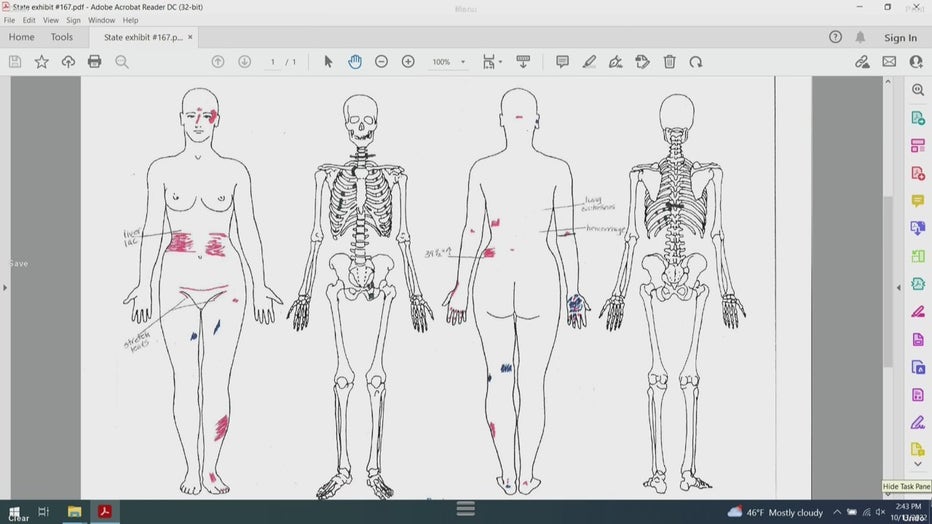
Jane Kulich
She next testified about the autopsy of Jane Kulich, who was marching in the parade with Citizens Bank. Kulich was brought to the medical examiner's office from Waukesha Memorial Hospital.
She testified Kulich had impact injuries from the ground, impact injuries from the vehicle and crushing from the tire, which compressed her liver and diaphragm, among other injuries. She noted Kulich's chest, pelvis and abdominal injuries were very serious and could have been fatal individually.
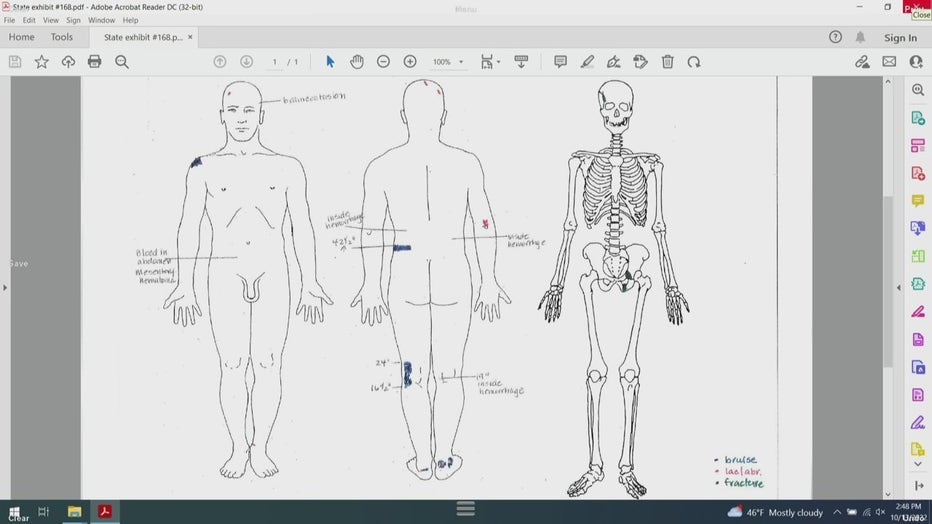
Wilhelm Hospel
She next testified about the autopsy of Wilhelm Hospel. She said she saw Hospel at the hospital after he died in surgery. Hospel was then brought to the medical examiner's office after his passing at the hospital. She said he was struck by the SUV and sustained injuries, and more injuries came when he hit the ground.
She said Hospel's most severe injuries were his pelvic injuries, but noted "it’s possible his head injuries would have been independently fatal."
On cross, Brooks asked why she would examine a car being that she's in the medical field.
"The injuries that people sustain… it’s important to correspond the nature of the implement, the implement being the car, so it’s possible I would be shown a car that would be not consistent with the injuries," she said.
Brooks again asked whether examining the vehicle would be essential to her medical expertise.
"Examining the vehicle is important to interpret the injuries," she said.
Brooks followed up by asking if the injuries were caused by a different kind of instrument, whether the same would apply, and she would view that.
"Yes. In cases of gunshot wounds, I ask to see the gun. In cases of stabbing or blunt trauma, I ask to see the weapons used… I can’t make precise matches, but I can say it looks like a baseball bat, or it looks like a pair of scissors, that sort of thing," she said.
Brooks asked the medical examiner if she noted any natural diseases during the autopsies. She said Hospel had heart disease and a pacemaker. She remembered Kulich had a large fibroid -- a benign uterine tumor. Brooks asked if that was a form of cancer. The medical examiner said "no."
The defendant asked about Hospel's pacemaker and asked whether it would have had any effect "on what was going on in his chest at that time."
The medical examiner said "no," adding that it was working properly, and she said "the loss of blood had no effect on the electrical function of the pacemaker."

Darrell Brooks in court Thursday, Oct. 13
During cross, Biedrzycki testified that she knew the vehicle was in custody at some point either before she got to the scene or after she was at the scene.
Brooks asked whether Biedrzycki focused on one certain area of the vehicle when she viewed it. She said the Crime Lab was there, and they looked at the "entire circumference" of the vehicle and also had the vehicle on a lift and looked under it. Brooks asked if she looked at the vehicle fluid, and she said she paid more attention to the front of the vehicle because that’s what’s involved in a pedestrian strike.
"Would you determine that all of the damage that you observed would be caused strictly from hitting one thing or numerous?" asked Brooks.
"I can say that there were multiple areas of the car that had damage ... there were dents in multiple areas of the car," she said.
The defendant followed up by asking about her observations about speed/velocity and questioned her expertise in that area.
"All injuries I see in the body have to do with that transfer [of kinetic energy]," she said.
Brooks then went into the line of questioning he's used with most, if not all, of the witnesses, asking Biedrzycki who asked her to testify in this case, whether there's a plaintiff, whether she knows of any claims filed in the matter and whether she's viewed a complaint.
Biedrzycki was also asked by Brooks about the diagrams shown during her testimony, which she said she drew, noting that it took time to put them together because there were no diagrams available showing the front and back of the body and skeletal features, as her diagrams did.
"What I decided was, we had three decedents, and I thought it would be easiest for the jury to understand it… if I could compress the information," she said.
Brooks asked if she’d thought about that before – after she testified that she had used diagrams in many, many trials.
"I don’t remember testifying about three pedestrian fatalities in one sitting ever before," she said.
On redirect, Deputy District Attorney Lesli Boese asked if all of the findings from her diagrams were from the initial autopsy work. She said "yes." Boese asked if she could have brought in a skeleton and described the same injuries.
"I could show you the broken bones on the skeleton. I couldn’t show you the injuries to the soft tissue or the organs on the skeleton," Biedrzycki said.
Boese asked if anything on the diagrams wasn't listed in the autopsy. Biedrzycki said "no."
Boese also asked if Kulich's uterine fibroid and Hospel's heart disease/pacemaker were factors in their deaths. She said "no."
Matthew Widder, Catholic Community of Waukesha priest, testifies
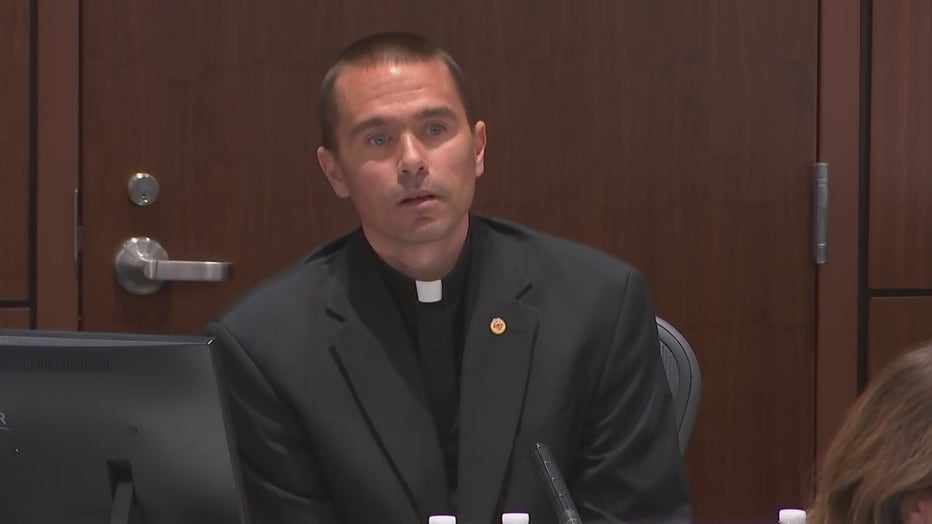
Matthew Widder
Matthew Widder, priest with the Catholic Community of Waukesha, was the next to testify for the state. He was walking in the parade with the group on Nov. 21, 2021.
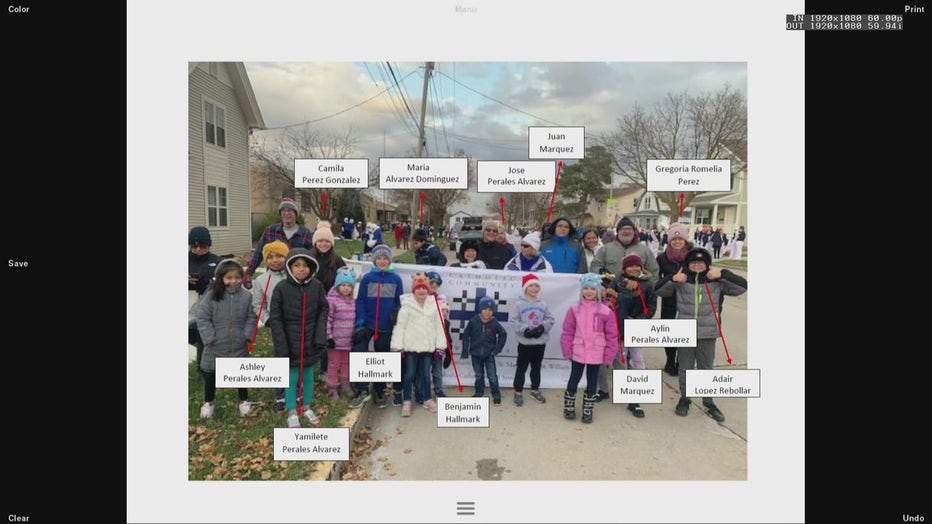
Catholic Community of Waukesha
A photo of the Catholic Community of Waukesha parade group was shown, and Widder went over who's who.
Widder was then asked if his attention was drawn to something during the parade.
"Yes, so all of a sudden, we kind of heard a scream. I turned to my left, and there was an SUV just flying down the road…" he said. "My next experience would be kind of hearing it... collide into people."
He said he heard this two times.
Boese asked if he saw the SUV hit people.
"My mind blocks that part out of it, so I couldn't say who was hit in those impacts," he said. "What I can say is at my next encounter, there were three people from our group… that were lying more or less right in my immediate path."
Widder was asked if he heard the impacts or saw the SUV first.
"I saw the red SUV just flying on the left side of me -- flying is a relative word, but it was going faster than anyone in their right mind would be driving in that scenario," he said.
When asked to estimate the speed, he noted the speed limit is 25, and "my estimation was going faster than I would see a car driving in normal times on that street."
He said he did not see the driver.
"I saw it just fly by, and my attention immediately was drawn to the three people that were on the ground in my vicinity," said Widder.
Widder said he went with Father Patrick Heppe, one of the three injured, to the hospital and encountered more from their group who were hurt.
Boese then went through the names of the people in Widder's group and asked whether they were injured and the extent of the injuries.
On cross, Brooks asked Widder why he would be testifying on behalf of an injured party if he wasn’t an injured party.
"My thought would be, as the pastor, I would have a more wide-ranging knowledge of people’s conditions as a pastor," said Widder. "That’s what I would assume."
Brooks then asked how he could assess the injuries "just by looking at the people."
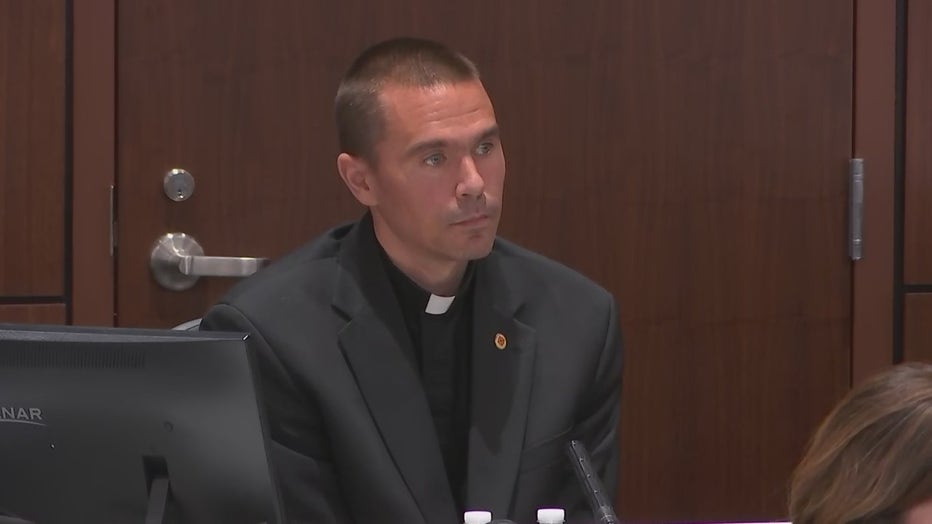
Matthew Widder
Widder said he’s not a doctor, so he’s not the one diagnosing, adding "I can observe what I see."
Brooks asked Widder about any "claims" in the case, and Widder noted the Waukesha Parade Fund, a fund through his parish, GoFundMe accounts, etc.
"There were any number of different things, different encounters that allowed people to come together… to start the healing from the emotional part of it," he said.
Brooks then asked if it would be fair to say there were financial interests tied to the incident. The judge sustained prosecutors' objections.
Brooks asked why he would say the SUV was a car. Widder said he’s not a car person and uses the term as wide-ranging. Brooks asked if it would be fair to say he wouldn’t call a bus a car, and Brooks laughed.
Brooks asked if Widder saw anyone outside his group get hit.
"At the time of the incident, I had no idea what had taken place behind us," said Widder.
Widder was asked if he could see into the vehicle.
"The vehicle was going very fast, so I would not have had a picture of who was driving the vehicle," said Widder, who again testified the SUV was going "over 25 mph."
Brooks then asked Widder several questions about when he was subpoenaed and by whom. Judge Dorow eventually ordered him to move to another topic.
Brooks also asked Widder if he knows who the plaintiff is.
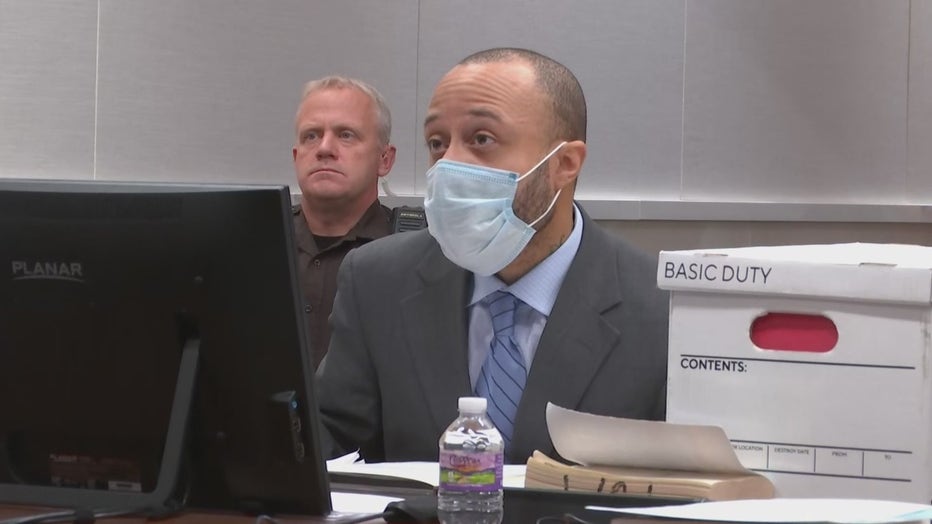
Darrell Brooks in court Thursday, Oct. 13
"You’re the defendant. The plaintiff would be… all those who were hurt under the title of the State of Wisconsin," said Widder. "That’s how I would identify it."
Dorow eventually closed Brooks' cross due to repeated questions about the plaintiff.
On redirect, Boese asked if Widder heard a horn honking. He said he personally did not.
She also asked if DA Opper ever told Widder what to say in court. He said no.
After Widder was dismissed, Judge Dorow said she wanted to get through one more witness but wanted to take a short comfort break and excused the jury. She then yelled at Brooks as he tried to interrupt.
"Mr. Brooks, not now. Not now. The jury is in this courtroom, and you will show respect for them and this court," said Dorow. "Mr. Brooks, stop. I’m putting you on notice that you are on the verge of this court creating a curative direction on your frivolous arguments… That is why your questions are being objected to."
Brooks told Dorow to prove his arguments were frivolous. The judge walked off and said, "We’re in recess."
Brooks was still seen shouting her way.
As the jury was brought back in, the jury was ordered to disregard Brooks' statements about subject matter jurisdiction, "as they are a misinterpretation of the law." Brooks said, "They absolutely are not."
Lukas Hallmark, Waukesha police detective, testifies
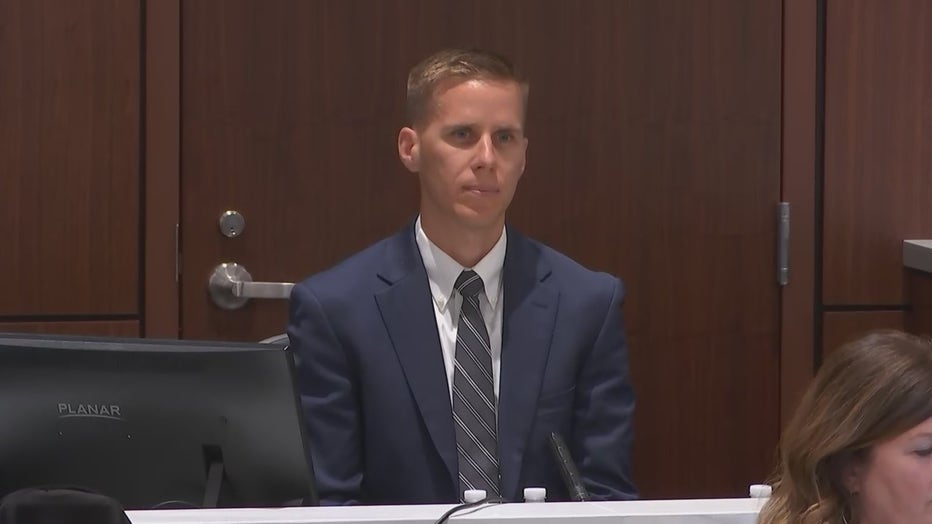
Lukas Hallmark
Next up for the state was Lukas Hallmark, Waukesha police detective.
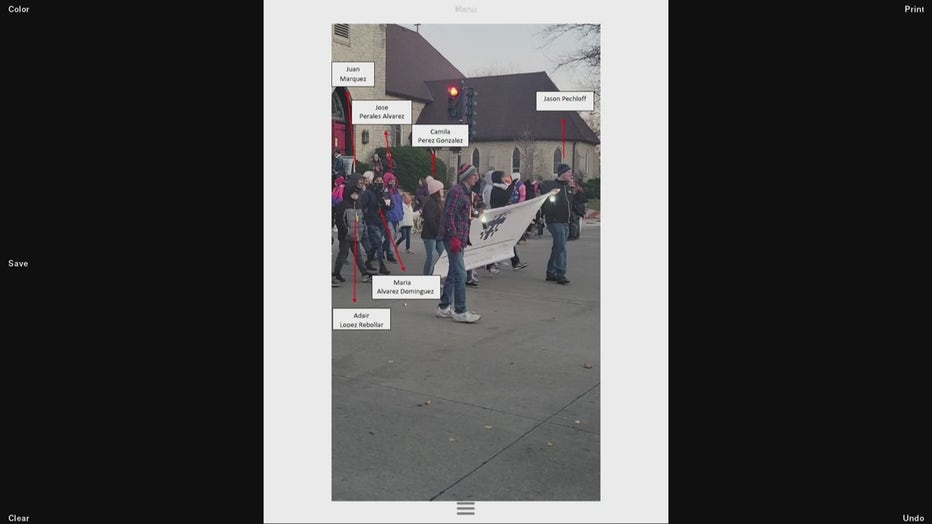
Catholic Community of Waukesha
He testified he's been a Waukesha police detective for 15 years, but he was at the parade with the Catholic Community of Waukesha with his wife and four kids. At time, their ages were 3, 5, 7 and 9. He said they were walking in a group of about 45.
Hallmark said at one point while marching with the group on Main Street, "my attention was directed towards large amounts of screaming coming behind us."
"I could see the top of a red vehicle traveling to the west coming towards us," said Hallmark.
Boese asked what he thought initially when he saw this.
"There was probably a lost motorist, and there was a vehicle traveling in the parade that shouldn’t have been there," said Hallmark, who said he had worked a parade in Waukesha.
Boese asked if sometimes, despite barricades, vehicles will come in, and Hallmark said "yes" and police will direct them to stop. He said he had never been present at a parade when one of these vehicles didn't stop.
Hallmark was then asked about the screaming he heard.
"After my initial thought of that vehicle was just a lost motorist, or they didn’t actually know what was going on, that thought faded very quickly and I realized that something was drastically wrong based on the fact that vehicle was traveling at a significant rate of speed towards our direction," said Hallmark.
"I recall the vehicle coming right at, toward where we were walking," Hallmark said as he continued his testimony. "It started hitting folks in our group, and the only thing I could remember doing was, I had my 3-year-old in my left hand and my 9-year-old in my right hand as we were walking down the parade route. My 7-year-old was walking in front of us… I realized we were going to get hit. I grabbed my 3-year-old, and I threw him toward the curb as hard as I could. At the same time, I tried to grab (my 7-year-old) and throw him as hard as I could to the curb."
He estimated the vehicle's speed at 30-40 miles per hour in the 25 mph zone.
Hallmark said he was clipped on his foot as the vehicle passed them. He was bruised and said his white sneakers had black marks he associated with tires.
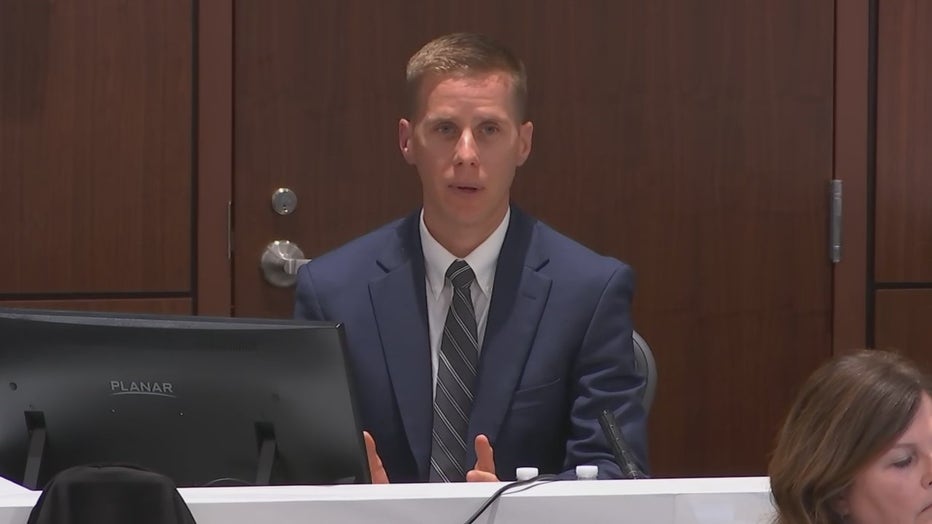
Lukas Hallmark
After the vehicle passed to his right, Hallmark was asked if he remembered anyone getting hit.
"I don’t recall seeing anyone specifically getting hit," said Hallmark. "I do remember hearing sounds of the vehicle striking objects, and the only objects in the road were people at the time."
He said his 9-year-old was missing after the vehicle passed. A minute to two minutes after the vehicle passed, he found him in the road, being tended to by people who covered him with a blanket. The person that was tending to him indicated he was knocked unconscious, Hallmark said, adding, "When I found him, he came to."
"There was a lot of individuals laying in the road as I looked back," said Hallmark.
His 7-year-old was also hurt, Hallmark said. He rode in the ambulance with his two young sons to Waukesha Memorial Hospital. He said in his work, "we go to Waukesha Memorial Hospital a lot."
"I’ve never seen anything like this in my entire life," said Hallmark of his observations at the hospital. "It was pretty much chaos. When we first got to the hospital, there was some sort of physician or EMT triaging individuals with what I believe was a permanent marker on their forehead… We were directed into the waiting room, and at that point, we were still on stretchers or backboards, just waiting until we could be tended to by some of the staff…"
Hallmark described his son's injuries.
Boese asked if his thought changed that this wasn’t a misguided vehicle, what it changed to.

Catholic Community of Waukesha
"After the vehicle had come through and struck our group, and then as I looked back at all the kind of carnage behind us, my thought was that we were involved in some sort of terrorist attack. Overwhelming fear, overwhelming panic… in downtown Waukesha," said Hallmark, who said he never saw the SUV stop.
Boese then went through several videos/screenshots and had Hallmark identify people from his group.
On cross, Brooks asked Hallmark whether he saw the videos and screenshots from video shown to him by the prosecution, and he said he had. He did not recall when he saw them but said, "I believe they were collected by the police department as evidence." He said he reviewed the information in preparation for his testimony.
Brooks followed up by asking why he would need to prepare for his testimony.
"This is a pretty significant incident. I wanted to make sure I was prepared fully for being here and testifying," he said.
Brooks had one of the videos pulled up that was shown to Hallmark and questioned him as to how he could positively identify people, as he did during his testimony, if he could not see faces. Hallmark said he was "pretty confident," and then he followed up by saying he was "very confident."
Brooks asked if the reason he could identify people was because he saw the exhibits before Thursday.
"No, I came to that conclusion because I remember being there that night," said Hallmark.
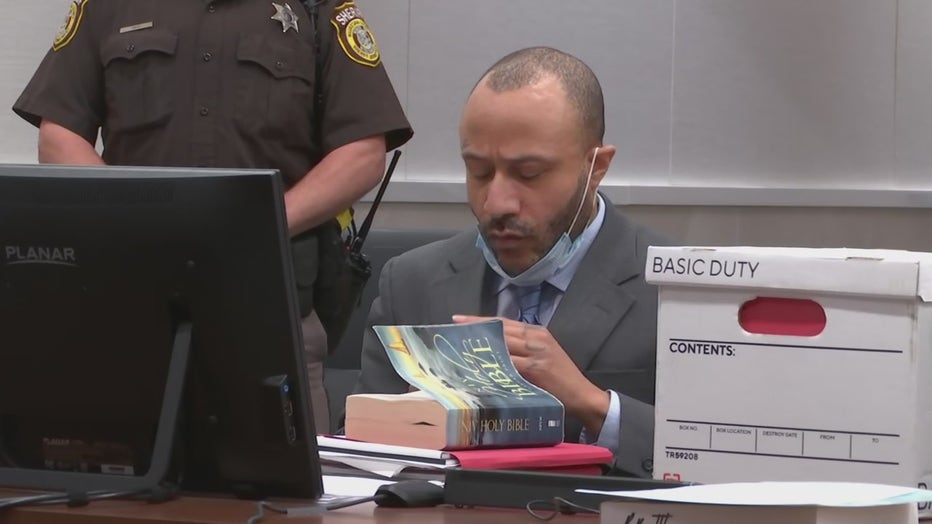
Darrell Brooks in court Thursday, Oct. 13
Brooks also questioned Hallmark about his two kids' injuries and asked how he came to his determination about the SUV's speed. When asked if it was fair to say he doesn't know for sure how fast the SUV was going, Hallmark said, "That's correct."
Hallmark said he did not see his 9-year-old get hit, nor did he see anyone else get hit.
Brooks then began asking Hallmark about his police report. The prosecution again noted that this was a summary of Hallmark's statement to police, versus his verbatim statement. Brooks asked why he didn't give names in the statement. The judge sustained prosecutors' objection.
On redirect, Boese asked if Hallmark was 100% in the identifications he made in exhibits. He said "yes." When asked what that was based on, he said, "My recollection of the incident."
Despite the state saying they wanted to call two witnesses before 6 p.m., they only finished Hallmark, the first one, by 6:25 p.m.
Judge Dorow then read jury instructions and ordered the jury to return Friday morning at 9 a.m. Opper requested the 9 a.m. start, noting she had a budget presentation scheduled for Friday morning.
After the jury left, Opper pulled back her request to start at 9, saying they would have another witness Friday who must be out by noon. The judge said because the jury was already informed of the time, the parties would report at 8:45 a.m. and Opper would show up at 9.
Dorow also noted that she had obtained a report filed related to Brooks' incident with deputies at one point when he was removed from the main courtroom earlier in the trial.
Brooks said he had to address how someone who isn’t an injured party can testify on behalf of someone who isn’t. The judge cut him off and said she was leaving the bench.
The court went into recess shortly after 6:30 p.m.
Christmas parade attack
Prosecutors say Brooks drove a red SUV through the parade route on Nov. 21, 2021, killing six and injuring more than 60 others.
On Nov. 21, 2021, according to prosecutors, Brooks met up with his ex-girlfriend in Frame Park, the same woman he is accused of running over with his red SUV earlier in November 2021. She told police they argued in his SUV before he started driving, and he "was driving around with one hand and striking her in the face with his other hand." She eventually got out and called her friends for help.
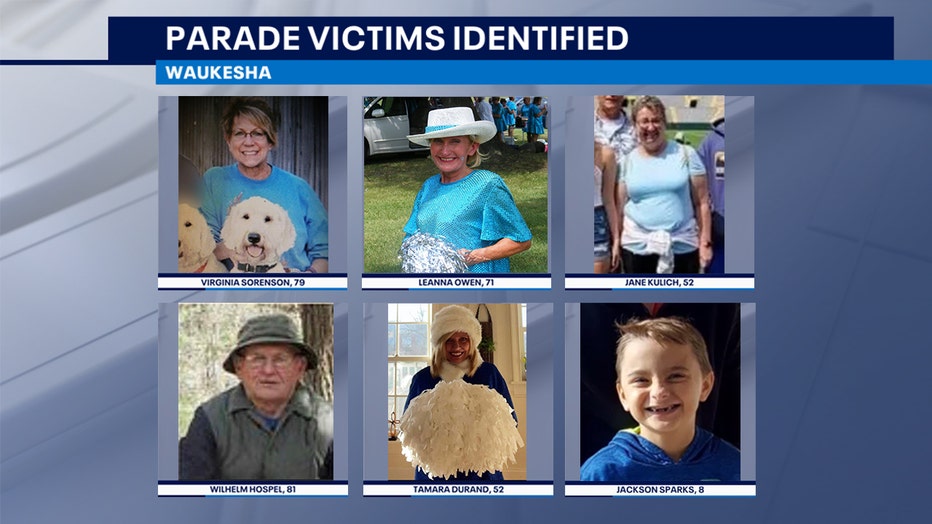
Waukesha parade attack victims identified
FREE DOWNLOAD: Get breaking news alerts in the FOX6 News app for iOS or Android
Soon after that, according to prosecutors, Brooks drove that red SUV through the parade route, killing Jackson Sparks, 8, Virginia Sorenson, 79, LeAnna Owen, 71, Tamara Durand, 52, Jane Kulich, 52 and Wilhelm Hospel, 81. More than 60 others were hurt.

